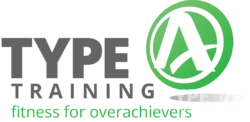Struggling to meet your fitness goals despite your best efforts? Don’t let misleading fitness myths hold you back any longer. It’s time to separate fact from fiction and debunk these common fitness myths that hinder progress.
Many long-standing fitness myths, like the idea that cardio is the sole path to weight loss or that stretching prevents injuries, can lead to frustration and disappointment when results don’t align. To avoid such setbacks, it’s crucial to understand the truth about fitness and set realistic expectations.
In this article, we’ll debunk prevalent fitness myths using scientific research and expert advice. We’ll cover various topics, including diet and nutrition, rest and recovery, strength training, and stretching. Get ready to have your fitness myths debunked once and for all.
Popular Fitness Myths
Popular posts:
There are many fitness myths out there that can prevent you from achieving your fitness goals. It’s important to separate fact from fiction to ensure that you’re not wasting your time and effort on ineffective exercises or diets. In this section, we will debunk some of the most common fitness myths.
Myth 1: Crunches are the Best Way to Get Abs
Crunches are a popular exercise for strengthening your core, but they are not the best way to get abs. In fact, doing too many crunches can lead to back pain and poor posture. To get visible abs, you need to reduce your body fat percentage through a combination of diet and exercise. This means doing a variety of exercises that target your entire core, such as planks, side planks, and Russian twists.
Myth 2: Running Is Bad for Your Knees
The myth that “Running Is Bad for Your Knees” is pervasive, but research shows that running can benefit knee health when done correctly. Studies indicate that recreational running is linked to a lower incidence of knee and hip osteoarthritis compared to a sedentary lifestyle. Running strengthens knee muscles, improves joint proprioception, and stimulates cartilage growth.
Proper running technique and training are essential to avoid injuries. A professional running coach can create a personalized plan, teach correct form, and recommend suitable footwear. For example, Type A Training (NYC in-home personal training company) emphasizes individualized coaching to enhance performance and reduce injury risks through biomechanical assessments and tailored programs. With the right guidance, you can enjoy running’s health benefits while minimizing knee injury risks.
Myth 3: Cardio is the Only Way to Burn Fat
While cardio is an effective way to burn calories, it’s not the only way to burn fat. Resistance training, such as weightlifting, can also help you burn fat by increasing your muscle mass and metabolism. In fact, a combination of cardio and resistance training is the most effective way to burn fat and build muscle.
Myth 4: Weight Training Makes Women Bulky
Similar to myth 2, weight training does not make women bulky. In fact, weight training can help women lose body fat and increase their metabolism. Women have lower levels of testosterone than men, which makes it harder to build muscle mass. Lifting weights can actually help women achieve a leaner, more toned physique.
Myth 5: You Need Protein Shakes to Build Muscle
While protein is important for building muscle, you don’t necessarily need protein shakes to meet your daily protein needs. You can get protein from a variety of whole foods, such as chicken, fish, eggs, and beans. Protein shakes can be a convenient way to get protein, but they are not necessary for building muscle.
Myth 6: Stay in the Fat-Loss Zone and You’ll Be Ripped
The idea that staying in the “fat-loss zone” will get you ripped is a common myth. The fat-loss zone involves low-intensity exercise, burning a higher percentage of fat calories, but not necessarily leading to greater overall fat loss. A study in the Journal of Obesity found that high-intensity interval training (HIIT) is more effective for fat loss than moderate-intensity continuous training. HIIT’s short bursts of intense exercise followed by rest increase calorie burn during and after workouts.
HIIT elevates your heart rate and metabolic rate for hours post-exercise, known as excess post-exercise oxygen consumption (EPOC), resulting in higher calorie burn even when at rest. In contrast, low-intensity exercise burns fewer total calories. Thus, combining HIIT with moderate-intensity exercise is more effective for achieving a ripped physique and overall fat loss.
Myth 7: Sweating More Means You’re Burning More Calories
Sweating is a natural response to heat and exercise, but it does not necessarily mean that you’re burning more calories. Sweating is simply your body’s way of regulating its temperature. The intensity of your workout and the number of calories burned are what determine your weight loss progress.
Myth 8: You Can Target Fat Loss in Specific Areas (Spot Reduction)
Unfortunately, you cannot target fat loss in specific areas of your body. When you lose weight, you lose it from all over your body, not just one specific area. Doing exercises that target a specific area, such as crunches for abs, can help strengthen and tone that area, but it will not necessarily reduce fat in that area.
Myth 9: Is it Better to Work Out in the Morning or at Night?
The best time to work out depends on your personal preference and schedule. Some people prefer to work out in the morning to start their day off on the right foot, while others prefer to work out in the evening to relieve stress after a long day. The most important thing is to find a time that works for you and stick to it consistently.
Diet and Nutrition
When it comes to diet and nutrition, there are many myths and misconceptions out there. Here are some of the most common ones, debunked.
Myth 10: The Truth About Supplements and Wellness Products
Many people believe that taking supplements or using wellness products can help them lose weight or improve their health. However, the truth is that most of these products are not backed by scientific evidence. In fact, some of them can even be harmful to your health. It’s always best to get your nutrients from whole foods rather than relying on supplements or other products.
Myth 11: Exercising on an Empty Stomach for More Fat Burn
Some people believe that exercising on an empty stomach can help them burn more fat. However, this is not true. When you exercise on an empty stomach, your body doesn’t have enough energy to perform at its best. This can lead to a decrease in performance and may even cause you to burn fewer calories overall. It’s best to eat a small snack before exercising to give your body the energy it needs.
Myth 12: If You Want to Lose Fat, Avoid Fat
The myth that you should avoid fat to lose fat has been debunked by recent research and diets like keto. Consuming healthy fats supports fat loss and overall health. The keto diet, high in fats and low in carbs, shifts the body to burn fat for fuel, aiding weight loss and improving metabolic health.
Incorporating healthy fats, such as those in avocados, nuts, seeds, and olive oil, can increase satiety and provide essential nutrients. Bulletproof coffee, made with coffee, grass-fed butter, and MCT oil, offers sustained energy and promotes fat burning. Thus, avoiding fat to lose fat is misguided; healthy fats are crucial for effective weight loss.
Myth 13: You Should Eat as Little as Possible to Lose Weight
Eating too little can actually be counterproductive when it comes to weight loss. When you don’t eat enough, your body goes into starvation mode and slows down your metabolism. This can make it harder to lose weight in the long run. Instead, focus on eating a balanced diet with plenty of fruits, vegetables, and lean protein.
Myth 14: You Can Out-Exercise a Bad Diet
Exercise is important for overall health, but you can’t out-exercise a bad diet. If you’re eating unhealthy foods, no amount of exercise will make up for it. It’s important to focus on both diet and exercise for optimal health and weight loss.
Myth 15: Dangers of Juice Cleanses and Detox Diets
Juice cleanses and detox diets have become popular in recent years, but they can be dangerous to your health. These diets often involve consuming only liquids for several days or weeks, which can lead to nutrient deficiencies and other health problems. Instead, focus on eating a balanced diet with plenty of fruits, vegetables, and whole grains.
Myth 16: You Should Work Out Every Day
While it’s important to stay active and incorporate exercise into your daily routine, working out every day can actually do more harm than good. Your muscles need time to recover and repair themselves after a workout, and if you don’t give them that time, you risk injuring yourself. Overtraining can lead to muscle breakdown and fatigue, which can ultimately hinder your progress. Instead, aim to work out 3-5 times a week and give your body time to rest and recover.
Myth 17: You Only Need to Sleep a Few Hours a Night
Sleep is crucial for recovery and muscle repair. When you sleep, your body releases growth hormone, which is essential for muscle growth and repair. If you don’t get enough sleep, your body won’t have enough time to repair itself, and you’ll be more prone to injury. Aim to get 7-9 hours of sleep each night to ensure that your body has enough time to recover.
Myth 18: Rest Days are for the Weak
Rest days are just as important as exercise days. When you take a rest day, your muscles have time to recover and repair themselves, which ultimately leads to better performance and results. Skipping rest days can lead to overtraining, which can cause muscle breakdown and fatigue. Instead of skipping rest days, use them as an opportunity to stretch, foam roll, or do some light yoga to help your body recover.
In conclusion, rest and recovery are essential components of any fitness routine. By incorporating rest days and getting enough sleep, you’ll be able to maximize your results and avoid injury. Don’t fall for the myths that tell you to work out every day or skip rest days – these practices can ultimately do more harm than good.
Strength Training
If you’re looking to build lean muscle, improve your metabolism, and increase your overall strength, then strength training is an excellent choice. However, there are several myths surrounding strength training that might be holding you back from achieving your fitness goals. Let’s debunk a few of those myths.
Myth 19: Strength Training is Only for Bodybuilders
This is a common misconception that prevents many people from incorporating strength training into their fitness routine. However, strength training is not just for bodybuilders. It’s a great way to build lean muscle, improve your metabolism, and increase your overall strength. In fact, strength training is beneficial for people of all ages and fitness levels.
Myth 20: You Can’t Build Muscle After 40
This is another common myth that prevents many people from incorporating strength training into their fitness routines. However, research has shown that you can still build muscle after 40. It might take a bit longer and require more effort, but it’s possible. In fact, strength training can help you maintain your muscle mass and overall strength as you age.
Myth 21: You Need to Lift Heavy Weights to Build Muscle
While lifting heavy weights can be beneficial for building muscle, it’s not the only way, especially for females. Research shows that you can build muscle with lighter weights and higher reps. Additionally, incorporating other forms of strength training, such as yoga strength training, can help build lean muscle and improve overall strength.
Incorporating strength training into your fitness routine is crucial, particularly for women over 50 and seniors, to build lean muscle, boost metabolism, and enhance overall strength. Don’t let these myths hold you back from achieving your fitness goals.
Stretching and Flexibility
When it comes to stretching, there are many myths and misconceptions. In this section, we will debunk some of the most common myths about stretching.
Myth 22: You Should Stretch Before Your Workout
Many people believe that stretching before a workout can prevent injuries and improve performance. However, research shows that stretching before a workout can increase the risk of injury. Instead of stretching before your workout, you should focus on a proper warm-up that includes dynamic movements to prepare your body for physical activity.
Myth 23: Stretching can cure muscle soreness
Stretching is often recommended as a way to alleviate muscle soreness after a workout. However, stretching alone is not enough to cure muscle soreness. The best way to prevent muscle soreness is to gradually increase the intensity of your workouts and to make sure you are properly hydrated.
Myth 24: Stretching can make you taller
Many people believe that stretching can make you taller. However, this is not true. While stretching can improve your posture, it cannot actually make you taller. Your height is determined by your genetics and cannot be changed by stretching.
In addition to debunking these myths, it is important to note that stretching can be beneficial when done correctly. Stretching can improve flexibility, fix bad posture, and prevent injuries when done as part of a proper warm-up and cool-down routine.
Sources:
Realistic Expectations
When it comes to fitness, it’s important to have realistic expectations. Here are some common myths that can lead to unrealistic expectations:
Myth 25: You Can Achieve Your Dream Body in a Month
Sorry to burst your bubble, but achieving your dream body takes time and effort. Crash diets and extreme workout plans may promise quick results, but they are not sustainable and can even be harmful to your health. Instead, focus on making small, sustainable changes to your diet and exercise routine over time. Go check out: Nine Natural Methods That Are Proven to Aid Weight Loss.
Myth 26: Fitness Influencers Have All the Answers
Social media platforms like TikTok, Instagram, and YouTube are full of fitness influencers claiming to have all the answers to your fitness questions. However, it’s important to remember that what works for one person may not work for you. Take advice from influencers with a grain of salt and always consult with a certified fitness professional before making any major changes to your routine.
Myth 27: The Scale is the Best Measure of Progress
Many people rely on the scale to measure their progress on their fitness journey. However, the scale only tells part of the story. Factors like muscle gain, water retention, and hormonal fluctuations can all impact your weight. Instead of focusing solely on the number on the scale, pay attention to how your clothes fit, how you feel, and your overall health and well-being.
Women’s Myths Debunked
28. Women Should Only Do Yoga and Pilates
While yoga and Pilates are excellent for flexibility, core strength, and mental well-being, they shouldn’t be the only forms of exercise women engage in. Incorporating a variety of workouts, including strength training and cardio, is essential for overall fitness and health. A balanced exercise routine helps build muscle, improve cardiovascular health, and enhance overall body strength.
29. Women Should Avoid High-Intensity Workouts
Some believe that high-intensity workouts are too strenuous for women, but this is not true. High-intensity interval training (HIIT) can be very effective for women, promoting fat loss, improving cardiovascular health, and increasing metabolic rate. Women can safely participate in HIIT workouts, provided they follow proper form and listen to their bodies.
30. Women Shouldn’t Lift Heavy Weights
The myth that women should only lift light weights for high repetitions is outdated. Lifting heavier weights with proper form can help women build strength, improve bone density, and enhance overall fitness. It’s important to challenge your muscles to see progress and achieve fitness goals.
31. Spot Reduction Works
Many women believe that doing exercises targeting specific body parts, like crunches for belly fat, will reduce fat in those areas. However, spot reduction is a myth. Fat loss occurs throughout the body based on overall activity levels and genetics. A combination of full-body workouts, healthy eating, and cardio is more effective for reducing body fat.
32. Excessive Cardio Is Necessary
Some women think that more cardio is always better for weight loss. However, excessive cardio can lead to muscle loss, increased stress hormones, and potential burnout. Balancing cardio with strength training and allowing adequate recovery time is crucial for sustainable fitness and health.
These myths often discourage women from achieving their full fitness potential. Understanding the truth behind these misconceptions can help women adopt more effective and balanced workout routines.
Kids’s Myths Debunked
33. Strength Training Stunts Growth
One common myth is that strength training can stunt a child’s growth. However, research shows that with proper supervision and appropriate techniques, strength training is safe and beneficial for children. It can improve muscle strength, bone density, and overall physical health without affecting growth negatively.
34. Kids Get Enough Exercise from Daily Activities
Many believe that kids naturally get enough exercise through play and daily activities. However, with the increasing prevalence of sedentary lifestyles due to screen time and other factors, many children do not meet the recommended physical activity levels. Structured exercise programs and active play are essential to ensure kids stay healthy and fit.
35. Competitive Sports Are the Best Way to Keep Kids Fit
While competitive sports can be a great way for kids to stay active, they are not the only option. Many children benefit from non-competitive physical activities such as swimming, biking, hiking, or dancing. The key is to find activities that children enjoy and will stick with long-term. Additionally, non-competitive activities can reduce the risk of injury often associated with high-intensity sports.
36. Kids Don’t Need to Warm Up or Cool Down
Some believe that kids are naturally flexible and don’t need to warm up before exercise or cool down afterward. However, just like adults, children can benefit from warming up to prepare their muscles and joints for activity and cooling down to aid recovery and reduce the risk of injury.
Debunking these myths can help ensure that children engage in safe, effective, and enjoyable physical activities that promote lifelong health and fitness.
Top Takeaways about Popular Fitness Myths Debunked
After debunking some of the most common fitness myths, you may feel like you have a better understanding of what it takes to achieve your fitness goals. Here are some key takeaways to keep in mind:
- Cardio Alone Won’t Lead to Significant Weight Loss: While cardio is an essential part of any workout routine, it’s not the only solution to weight loss. A combination of cardio and strength training can help you build lean muscle mass, increase your metabolism, and burn more calories overall. (Mayo Clinic Health System)
- You Don’t Need to Spend Hours at the Gym Every Day: Quality over quantity is key when it comes to workouts. Short, intense workouts can be just as effective as longer ones, and incorporating rest days into your routine is essential for allowing your body to recover and prevent injury.
- Stretching Alone Won’t Prevent Injuries: While stretching can help improve flexibility and range of motion, it’s not a guarantee against injury. Incorporating warm-up exercises and gradually increasing the intensity of your workouts can help prepare your muscles for the demands of exercise and reduce the risk of injury.
- Nutrition Plays a Crucial Role in Achieving Fitness Goals: Eating a balanced diet that includes plenty of protein, healthy fats, and complex carbohydrates can help fuel your workouts and support muscle growth and repair. Supplements like protein powder or pre-workout drinks can be helpful, but they’re not a substitute for a healthy diet.
- The Importance of Certified Training: Having a certified trainer, such as those from Type A Training, can provide you with personalized guidance, scientifically-backed workout plans, and the motivation needed to achieve your fitness goals. Certified trainers ensure that you are performing exercises correctly to maximize benefits and minimize the risk of injury.
By keeping these takeaways in mind and staying informed about the latest fitness research, you can make informed decisions about your workout routine and achieve your fitness goals more effectively.









